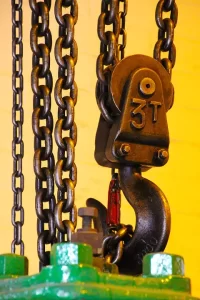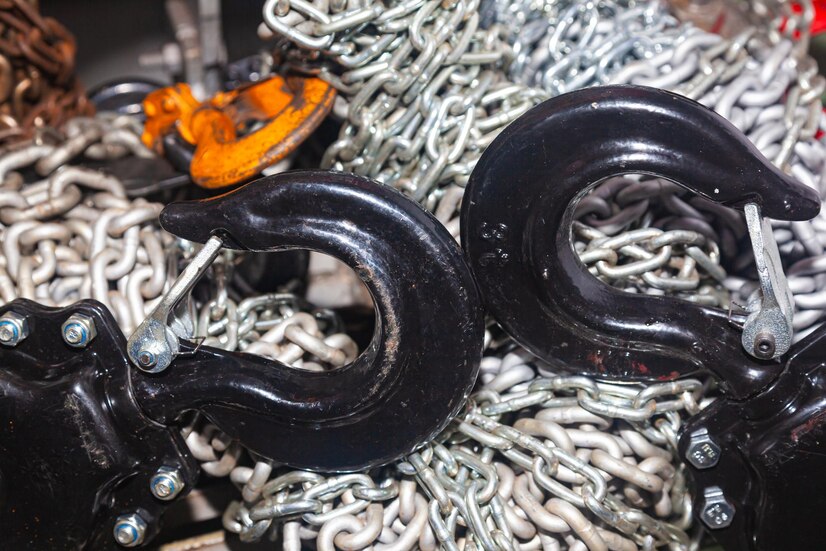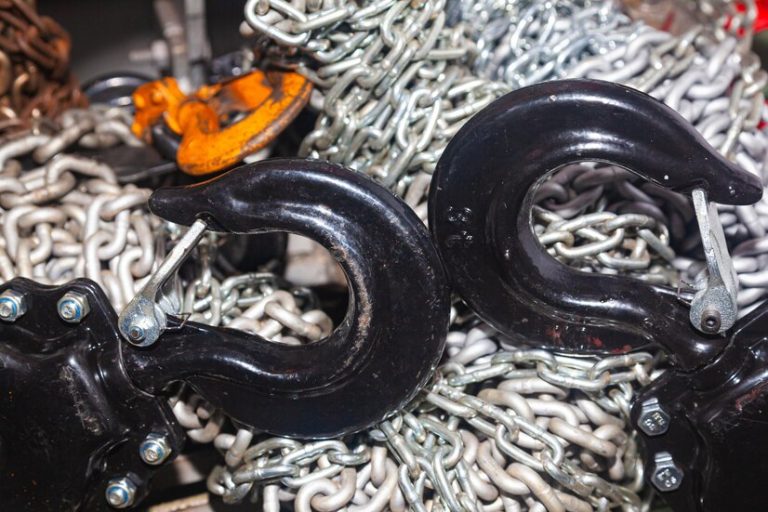When discussing the different grades and types of chains, particularly in industrial and mechanical applications, it’s important to understand that chains are categorized based on their material, strength, design, and intended use. Chains serve a wide variety of purposes, from lifting heavy loads to transporting materials, and each grade or type has been specifically designed to handle certain stresses or environmental conditions. This article will provide an overview of the different grades of chain, the differences between them, and their typical applications.
1. Introduction to Chain Grades and Differences
A chain’s grade refers to its tensile strength, which is essentially the maximum load it can safely carry without breaking. The grade is typically denoted by a number, such as Grade 30, Grade 40, Grade 70, or even higher, with each grade representing a different level of strength. Chains are made from various materials, including steel alloys, carbon steel, stainless steel, and others, which further affect their grade and performance.
The grade of a chain directly impacts its performance in different environments, as well as the safety and durability of the equipment it supports. Whether used for lifting, towing, or conveying, choosing the right chain grade is critical to ensure that it can withstand the mechanical forces it will encounter without failure.
2. Common Chain Grades
The most common chain grades are:
- Grade 30 (Proof Coil Chain)
- Grade 40 (Proof Coil Chain)
- Grade 70 (Transport Chain)
- Grade 80 (Lifting Chain)
- Grade 100 (Lifting Chain)
- Grade 120 (Lifting Chain)
Each of these grades has distinct characteristics that make them suitable for specific applications.
Grade 30 Chain (Proof Coil Chain)
Grade 30 chains, also known as proof coil chains, are typically made of low-carbon steel. These chains are commonly used in applications where strength is not as critical, but reliability and versatility are important. The “proof coil” name comes from the process by which the chain is made: the steel is heat-treated to a specific tensile strength.
- Strength: Grade 30 chains are generally used in light-duty applications and have a lower tensile strength compared to higher-grade chains.
- Applications: They are typically used for general-purpose applications, including agricultural equipment, light towing, and securing loads.
- Features: Grade 30 chains are usually relatively inexpensive, but they lack the higher strength and durability of higher-grade chains.
Grade 40 Chain (Proof Coil Chain)
Grade 40 chains are a step up from Grade 30 in terms of strength. They are also made from low-carbon steel but are heat-treated to a higher tensile strength.
- Strength: Grade 40 chains are suitable for moderate-duty applications where the demands on strength and durability are higher than what Grade 30 can offer.
- Applications: They are commonly used in applications like industrial settings, securing lighter loads, or for use in basic winches and trailers.
- Features: They offer a balance between strength and affordability, making them a good choice for moderate-duty tasks where cost is a consideration.
Grade 70 Chain (Transport Chain)
Grade 70 chains, also known as transport chains, are made from high-strength steel, usually heat-treated for added durability. These chains are specifically designed for load-securement applications, especially in transporting goods.
- Strength: Grade 70 chains are stronger than Grade 30 and Grade 40 chains, offering a much higher tensile strength. They are capable of carrying significantly heavier loads.
- Applications: They are typically used in towing, securing loads in trucks, and in heavy-duty trailers. These chains are often used in transportation industries for securing cargo.
- Features: Grade 70 chains often come with yellow chromate plating, which helps protect them from corrosion. They are commonly used in environments where chains need to endure heavy-duty stress.
Grade 80 Chain (Lifting Chain)
Grade 80 chains are made from alloy steel and are heat-treated to achieve high tensile strength. These chains are specifically designed for lifting and are often used in hoisting and lifting equipment.
- Strength: Grade 80 chains are stronger than Grade 30, Grade 40, and Grade 70, making them ideal for lifting applications. They can withstand higher stresses and are more durable.
- Applications: These chains are widely used in lifting operations, such as in cranes, hoists, and lifting slings. They are often found in industrial environments where heavy lifting is required.
- Features: Grade 80 chains are often identified by their distinctive color, typically purple or blue, to help differentiate them from other grades. They are also designed to be fatigue-resistant, which is crucial for lifting operations where chains experience frequent loading and unloading cycles.
Grade 100 Chain (Lifting Chain)
Grade 100 chains are similar to Grade 80 chains but are made from higher-quality alloy steel, which gives them an even higher tensile strength and durability.
- Strength: These chains are significantly stronger than Grade 80 chains, providing an even higher safety margin for lifting and load-bearing operations.
- Applications: Like Grade 80, Grade 100 chains are commonly used in lifting applications, but they are better suited for extremely heavy-duty operations, such as those found in heavy construction, offshore drilling, or large-scale industrial settings.
- Features: Grade 100 chains are also heat-treated to achieve their high strength and are often identified by their distinctive color, which is usually a metallic silver.
Grade 120 Chain (Lifting Chain)
Grade 120 chains are the highest grade of lifting chain available and are made from a premium alloy steel that offers exceptional strength and durability.
- Strength: As the strongest grade, Grade 120 chains are able to carry the heaviest loads and withstand the highest stresses.
- Applications: These chains are typically used in extreme lifting environments, including large industrial and construction projects. They are also used in highly demanding applications, such as in overhead cranes or for lifting heavy machinery.
- Features: Grade 120 chains are designed to provide maximum strength while maintaining a lighter weight than lower-grade chains of equivalent strength. They are also resistant to corrosion and fatigue.
3. Factors Affecting Chain Strength and Performance
The tensile strength of a chain depends on a number of factors, including:
Material Composition
The material from which a chain is made plays a crucial role in determining its overall strength. Chains can be made from carbon steel, alloy steel, stainless steel, or even materials like titanium or plastic, depending on the intended application. Higher-grade materials such as alloy steels or heat-treated carbon steels offer much higher tensile strengths and durability than standard carbon steels.
Heat Treatment
Heat treatment processes such as quenching and tempering are used to enhance the strength and hardness of a chain. Higher-grade chains (such as Grade 70, Grade 80, or Grade 100) undergo rigorous heat treatment processes to increase their tensile strength and resistance to fatigue. Heat-treated chains also tend to be more resistant to wear and tear, making them suitable for demanding applications.
Design and Manufacturing Process
The design of a chain, including the size of the links and the type of link (such as welded or assembled links), impacts its strength. Some chains are specifically designed to reduce the likelihood of chain fatigue, while others may be designed for flexibility or to reduce weight. The manufacturing process can also affect the consistency and quality of the chain, which in turn affects its strength and durability.
Environmental Conditions
Chains are often subjected to harsh environmental conditions that can affect their performance. Exposure to elements like water, chemicals, or extreme temperatures can weaken a chain over time. Chains that are used in corrosive environments, such as marine or chemical industries, are typically made from stainless steel or other corrosion-resistant materials to extend their lifespan.
4. Choosing the Right Chain Grade
Selecting the right chain grade depends on the specific application and requirements of the job. Factors to consider include:
- Load Weight: The primary factor in selecting a chain is the weight of the load that needs to be lifted or transported. Higher grades are required for heavier loads.
- Environmental Conditions: If the chain will be exposed to corrosive environments, a material that resists rust or corrosion, such as stainless steel or galvanized steel, should be chosen.
- Frequency of Use: Chains that are used frequently, especially in lifting applications, need to be durable and resistant to fatigue, so a higher-grade chain would be recommended.
- Safety: It is critical to consider the safety factors when selecting a chain. A chain that is too weak for the application can break under load, leading to damage or injury. Higher-grade chains typically have a higher safety margin.

5. Conclusion
In conclusion, the various grades of chains are designed for different levels of strength and durability, catering to different industries and applications. From the light-duty Grade 30 chain to the heavy-duty Grade 120 lifting chain, understanding the differences between these grades is crucial for selecting the right chain for a given task. Choosing the correct grade ensures that the chain can safely handle the load and operating conditions, providing both reliability and safety in demanding environments. Always consult manufacturer specifications and guidelines when selecting a chain to ensure it is appropriate for your specific needs.


